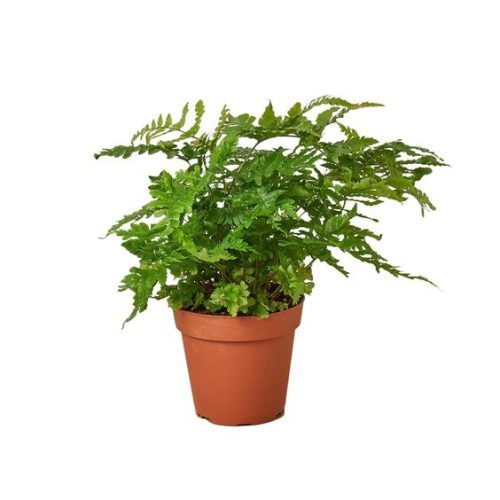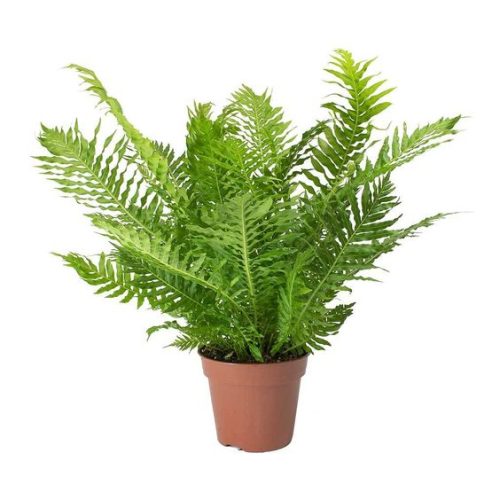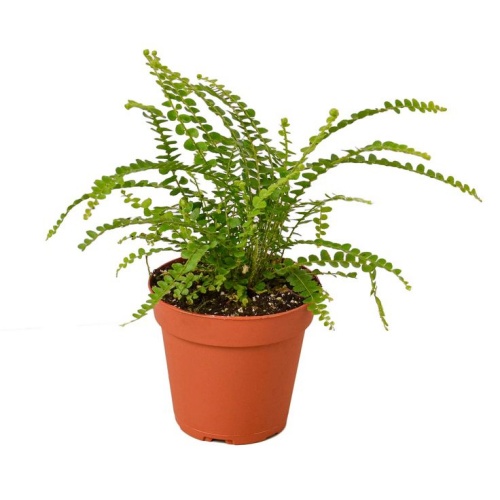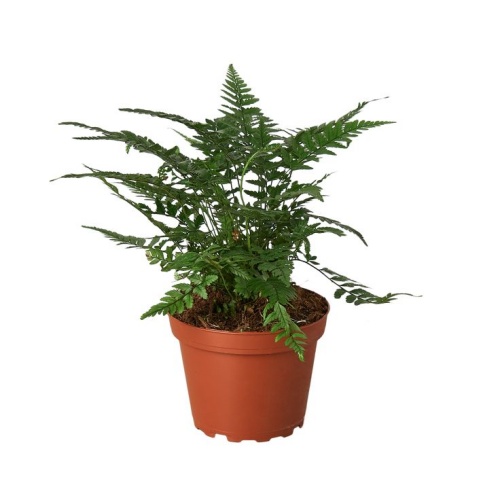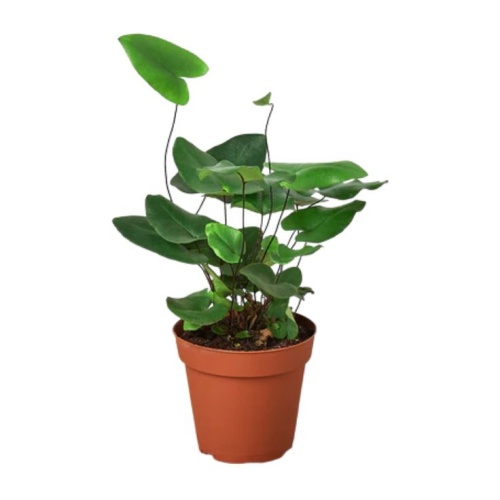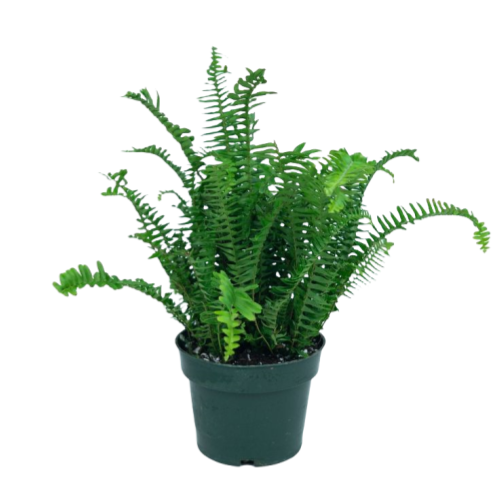Staghorn Fern
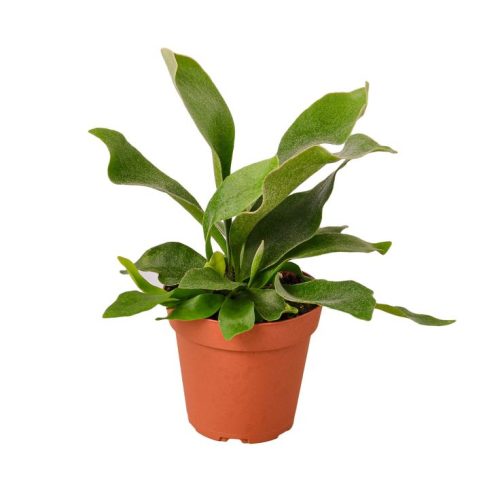
- Botanical Name:
- Family Name:
- Stems:
- Temperature:
- Others:
Overview
Product Description
Staghorn Ferns: Nature’s Antlered Interior Designers
The Staghorn Fern – Origins and Morphological Characteristics
Origin of Staghorn Fern
Staghorn Fern, scientifically known as Platycerium bifurcatum, is native to the eastern regions of Australia, where it thrives in damp and sheltered areas of forests. This fern species is named for its distinctive antler-like fronds, which fork dramatically into multiple branches, echoing the majestic appearance of a stag’s antlers.
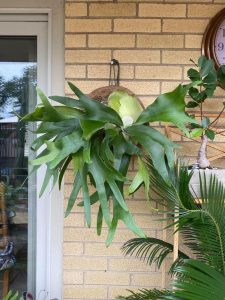
Staghorn Fern
Morphology of Staghorn Fern
The fronds of Staghorn Fern are large, leathery, and uniquely shaped, setting them apart in the fern family. They typically grow in clusters, with new fronds emerging from the center, gradually increasing the plant’s size. The fern’s morphology is not only visually striking but also an adaptation to its environment, allowing it to flourish in conditions where moisture is plentiful but light is filtered through the forest canopy.
Thriving in the Shadows with a Splash of Humidity
Habit and Care of Staghorn Fern
Staghorn Ferns (Platycerium spp.) are epiphytes native to tropical and subtropical regions, known for their large, antler-like fronds. These ferns have specific requirements when it comes to their growth conditions, which include:
Lighting Requirements
Staghorn Ferns prefer bright, indirect light. They are accustomed to growing in the dappled shade of forests, where sunlight is filtered through the canopy. Direct sunlight can scorch their large, delicate fronds. Therefore, it’s ideal to place them in a location that receives plenty of natural light but is shielded from the harshest rays of the sun. In indoor settings, a north or east-facing window is often suitable.
Humidity Needs
These ferns thrive in a humid environment, as they are adapted to the moist conditions typically found in their natural habitat. In the wild, they absorb moisture from the air and dew, in addition to rainfall. To replicate this, maintain a humidity level of around 50-60% or higher. Using a pebble tray, misting the plant regularly, or placing it in a bathroom with a humidifier can help achieve the necessary humidity.
Soil Selection
Staghorn Ferns do not require soil in the traditional sense, as they are epiphytic and often grow on tree bark or other organic matter in their natural environment. For cultivation, they can be mounted on slabs of bark or grown in a well-draining mix that mimics their natural habitat. A common medium consists of humus, perlite, and osmunda fiber, which provides excellent drainage and aeration while also holding some moisture. Avoid using regular potting soil, as this can retain too much water and lead to root rot.
Understanding and replicating these natural conditions is crucial for the successful care of Staghorn Ferns, ensuring they grow healthily and maintain their distinctive, exotic appearance.
When Interior Design Gets a Botanical Boost with Antler Envy
The Allure and Decorative Prowess of Staghorn Ferns
Staghorn Ferns, with their distinctive antler-like fronds, have earned a special place in the hearts of plant enthusiasts and interior decorators alike. These ferns are not just plants; they are living art pieces that bring a touch of the exotic and a dash of wilderness into any space.
Admired for Their Uniqueness
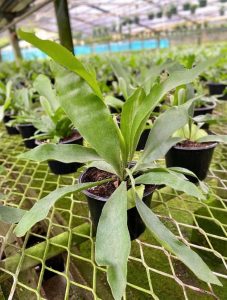
Staghorn Fern
People are drawn to Staghorn Ferns for their unique and dramatic form. The fronds, which fork and branch out in a way that mimics the antlers of a stag, offer a sculptural element that is both elegant and bold. This makes them a conversation starter in any room, a plant that is as much a decorative accent as it is a living organism.
Decorative Features
The Staghorn Fern’s decorative prowess lies in its ability to blend seamlessly into a variety of aesthetic themes, from tropical and jungle-inspired settings to minimalist and modern decor. Their large, architectural leaves can serve as a focal point, anchoring the look of a room and adding a layer of depth and texture that is hard to replicate with artificial decor.
Versatility in Design
These ferns are versatile in their placement, whether they are mounted on plaques to showcase their natural growth pattern or potted in hanging baskets to create a cascading effect. Their presence can transform a plain wall into a living mural or add a touch of greenery to a shelf or a desk.
Elegance and Grace
The elegance of Staghorn Ferns is undeniable. They possess a grace that softens the硬朗的线条 of modern interiors, providing a soothing and calming effect. Their natural beauty complements a range of color palettes and materials, making them a versatile choice for designers and homeowners seeking to infuse their spaces with life and character.
In essence, the Staghorn Fern is more than just a plant—it’s a statement of taste and a testament to the beauty of nature’s diversity. Its unique form and decorative appeal make it a beloved addition to homes and offices, offering a living piece of art that enhances any environment with its presence.





